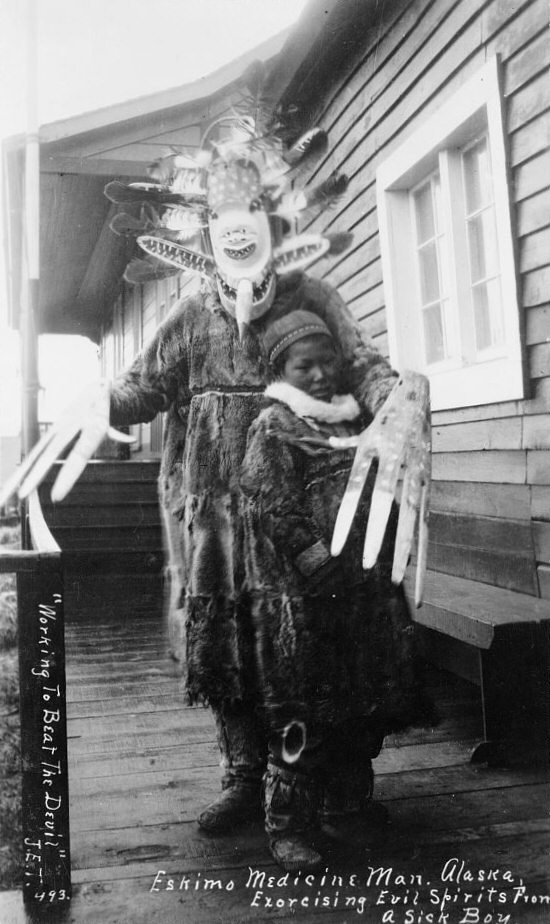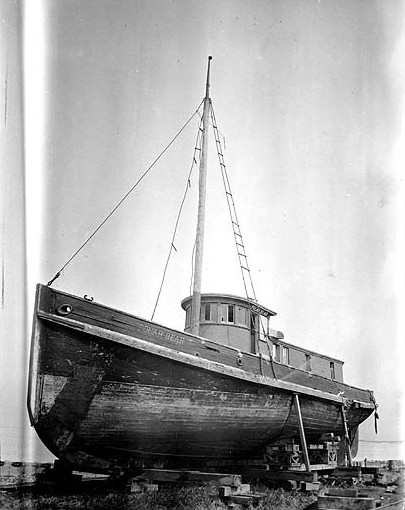Nushagak, Alaska on:
[Wikipedia]
[Google]
[Amazon]

 Nushagak was a trade center and settlement near the present-day site of Dillingham,
Nushagak was a trade center and settlement near the present-day site of Dillingham,



 The area was inhabited by
The area was inhabited by 
 In 1881, after the
In 1881, after the  The Pacific Steam Whaling Company built a cannery there in 1899 with Crescent Porter Hale as its first superintendent. It was bought by Pacific Packing and Navigation Co in 1901 and after its demise, Northwestern Fisheries Co. in 1904. Pacific American Fisheries bought the property in 1933 along with others in the region but never operated the Nushagak cannery. It was leased to Lowes Trading Company in 1936 and closed after the 1937 season following death of Lowes' manager, Alex Bradford, and reports of financial difficulties. The second cannery built in 1899 was owned by the Alaska Fisherman's Packing Co. It was bought by Libby, McNeill and Libby in 1916 and operated until 1936.
The Pacific Steam Whaling Company built a cannery there in 1899 with Crescent Porter Hale as its first superintendent. It was bought by Pacific Packing and Navigation Co in 1901 and after its demise, Northwestern Fisheries Co. in 1904. Pacific American Fisheries bought the property in 1933 along with others in the region but never operated the Nushagak cannery. It was leased to Lowes Trading Company in 1936 and closed after the 1937 season following death of Lowes' manager, Alex Bradford, and reports of financial difficulties. The second cannery built in 1899 was owned by the Alaska Fisherman's Packing Co. It was bought by Libby, McNeill and Libby in 1916 and operated until 1936.
 Despite the commanding position that the Point offered over the entire upper Nushagak Bay, it suffered from extensive and growing mud flats that limited access to vessels except during the bay's extreme high tides. Nushagak Point remains the location of some productive salmon set net sites. Artifacts from the cannery era, such as donkey engines, still remain.
The world wide
Despite the commanding position that the Point offered over the entire upper Nushagak Bay, it suffered from extensive and growing mud flats that limited access to vessels except during the bay's extreme high tides. Nushagak Point remains the location of some productive salmon set net sites. Artifacts from the cannery era, such as donkey engines, still remain.
The world wide
 In 1900, it reported 324 residents, but did not return the racial demographics. With the closure of the canneries, the population dropped precipitously. It did not report again after the 1940 census, though the Geographical Survey Professional Paper on Alaska reported an unofficial population of 7 in 1958.
In 1900, it reported 324 residents, but did not return the racial demographics. With the closure of the canneries, the population dropped precipitously. It did not report again after the 1940 census, though the Geographical Survey Professional Paper on Alaska reported an unofficial population of 7 in 1958.

 Nushagak was a trade center and settlement near the present-day site of Dillingham,
Nushagak was a trade center and settlement near the present-day site of Dillingham, Alaska
Alaska ( ; russian: Аляска, Alyaska; ale, Alax̂sxax̂; ; ems, Alas'kaaq; Yup'ik: ''Alaskaq''; tli, Anáaski) is a state located in the Western United States on the northwest extremity of North America. A semi-exclave of the U ...
, United States, at the northern end of Nushagak Bay
Nushagak Bay is a large estuary covering over 100 km2 in southwest part of the U.S. state of Alaska. It opens to Bristol Bay, a large body of water in the eastern Bering Sea north of the Alaska Peninsula.
It is home to the area's largest ci ...
in northern Bristol Bay
Bristol Bay ( esu, Iilgayaq, russian: Залив Бристольский) is the easternmost arm of the Bering Sea, at 57° to 59° North 157° to 162° West in Southwest Alaska. Bristol Bay is 400 km (250 mi) long and 290 km, ...
. It was located near the confluence of the Wood River Wood River may refer to:
Rivers In Canada
* Wood River (British Columbia), a tributary of the Columbia River via Kinbasket Lake
* Wood River (Saskatchewan), a river in south-west Saskatchewan
In Ireland
* Wood River (County Clare), Kilru ...
and Nushagak River
The Nushagak River ( esu, Iilgayaq) is a river in southwest Alaska, United States. It begins in the Alaska Range and flows southwest to Nushagak Bay, an inlet of Bristol Bay, east of Dillingham, Alaska.
The Mulchatna River is a major tributa ...
s.
History



 The area was inhabited by
The area was inhabited by Yup'ik people
The Yup'ik or Yupiaq (sg & pl) and Yupiit or Yupiat (pl), also Central Alaskan Yup'ik, Central Yup'ik, Alaskan Yup'ik ( own name ''Yup'ik'' sg ''Yupiik'' dual ''Yupiit'' pl; russian: Юпики центральной Аляски), are an I ...
and Athabaskan
Athabaskan (also spelled ''Athabascan'', ''Athapaskan'' or ''Athapascan'', and also known as Dene) is a large family of indigenous languages of North America, located in western North America in three areal language groups: Northern, Pacific ...
peoples. In 1818 Russians
, native_name_lang = ru
, image =
, caption =
, population =
, popplace =
118 million Russians in the Russian Federation (2002 '' Winkler Prins'' estimate)
, region1 =
, pop1 ...
built the post of Alexandrovski Redoubt (Post) there. A Russian Orthodox
Russian Orthodoxy (russian: Русское православие) is the body of several churches within the larger communion of Eastern Orthodox Christianity, whose liturgy is or was traditionally conducted in Church Slavonic language. Most ...
mission was established there in 1837, by which time the community was known as Nushagak. Nushagak became a place where different Alaska Native
Alaska Natives (also known as Alaskan Natives, Native Alaskans, Indigenous Alaskans, Aboriginal Alaskans or First Alaskans) are the indigenous peoples of Alaska and include Iñupiat, Yupik, Aleut, Eyak, Tlingit, Haida, Tsimshian, and a num ...
groups from the Kuskokwim River
The Kuskokwim River or Kusko River ( Yup'ik: ''Kusquqvak''; Deg Xinag: ''Digenegh''; Upper Kuskokwim: ''Dichinanek' ''; russian: Кускоквим (''Kuskokvim'')) is a river, long, in Southwest Alaska in the United States. It is the ninth l ...
, the Alaska Peninsula
The Alaska Peninsula (also called Aleut Peninsula or Aleutian Peninsula, ale, Alasxix̂; Sugpiaq: ''Aluuwiq'', ''Al'uwiq'') is a peninsula extending about to the southwest from the mainland of Alaska and ending in the Aleutian Islands. The ...
and Cook Inlet
Cook Inlet ( tfn, Tikahtnu; Sugpiaq: ''Cungaaciq'') stretches from the Gulf of Alaska to Anchorage in south-central Alaska. Cook Inlet branches into the Knik Arm and Turnagain Arm at its northern end, almost surrounding Anchorage. On its so ...
came to trade or live.

 In 1881, after the
In 1881, after the Alaska Purchase
The Alaska Purchase (russian: Продажа Аляски, Prodazha Alyaski, Sale of Alaska) was the United States' acquisition of Alaska from the Russian Empire. Alaska was formally transferred to the United States on October 18, 1867, through a ...
by the United States, the United States Signal Corps built a weather station at Nushagak. The first salmon
Salmon () is the common name for several commercially important species of euryhaline ray-finned fish from the family Salmonidae, which are native to tributaries of the North Atlantic (genus '' Salmo'') and North Pacific (genus '' Onco ...
cannery in the Bristol Bay region was constructed by Arctic Packing Company in 1883 at Kanulik, just east of Nushagak Point. Several other canneries followed, two of which were at Nushagak Point.
 The Pacific Steam Whaling Company built a cannery there in 1899 with Crescent Porter Hale as its first superintendent. It was bought by Pacific Packing and Navigation Co in 1901 and after its demise, Northwestern Fisheries Co. in 1904. Pacific American Fisheries bought the property in 1933 along with others in the region but never operated the Nushagak cannery. It was leased to Lowes Trading Company in 1936 and closed after the 1937 season following death of Lowes' manager, Alex Bradford, and reports of financial difficulties. The second cannery built in 1899 was owned by the Alaska Fisherman's Packing Co. It was bought by Libby, McNeill and Libby in 1916 and operated until 1936.
The Pacific Steam Whaling Company built a cannery there in 1899 with Crescent Porter Hale as its first superintendent. It was bought by Pacific Packing and Navigation Co in 1901 and after its demise, Northwestern Fisheries Co. in 1904. Pacific American Fisheries bought the property in 1933 along with others in the region but never operated the Nushagak cannery. It was leased to Lowes Trading Company in 1936 and closed after the 1937 season following death of Lowes' manager, Alex Bradford, and reports of financial difficulties. The second cannery built in 1899 was owned by the Alaska Fisherman's Packing Co. It was bought by Libby, McNeill and Libby in 1916 and operated until 1936.
 Despite the commanding position that the Point offered over the entire upper Nushagak Bay, it suffered from extensive and growing mud flats that limited access to vessels except during the bay's extreme high tides. Nushagak Point remains the location of some productive salmon set net sites. Artifacts from the cannery era, such as donkey engines, still remain.
The world wide
Despite the commanding position that the Point offered over the entire upper Nushagak Bay, it suffered from extensive and growing mud flats that limited access to vessels except during the bay's extreme high tides. Nushagak Point remains the location of some productive salmon set net sites. Artifacts from the cannery era, such as donkey engines, still remain.
The world wide influenza pandemic of 1918
The 1918–1920 influenza pandemic, commonly known by the misnomer Spanish flu or as the Great Influenza epidemic, was an exceptionally deadly global influenza pandemic caused by the H1N1 influenza A virus. The earliest documented case was ...
devastated the region in 1919, and contributed to the depopulation of Nushagak. After the epidemic a hospital and orphanage were established in Kanakanak, across the river and 6 miles (10 km) from the present-day city center of Dillingham.
Demographics
Nushagak first reported on the 1880 U.S. Census as an unincorporated village (spelled "Nushegak" and with the alternative name of "Alexandrovsk.") It reported 178 residents, of which 91 were Inuit, 86 were Creole (Mixed Russian and Native) and 1 White. In 1890, it reported as Nushagak, which also included the weather station, Nushagak Cannery & Hunters Camp.http://www2.census.gov/prod2/decennial/documents/1890a_v8-01.pdf It had 268 residents, of which a plurality (99) were Asian (imported workers for the canneries), 85 were Natives, 64 were White and 20 were Creole. In 1900, it reported 324 residents, but did not return the racial demographics. With the closure of the canneries, the population dropped precipitously. It did not report again after the 1940 census, though the Geographical Survey Professional Paper on Alaska reported an unofficial population of 7 in 1958.
In 1900, it reported 324 residents, but did not return the racial demographics. With the closure of the canneries, the population dropped precipitously. It did not report again after the 1940 census, though the Geographical Survey Professional Paper on Alaska reported an unofficial population of 7 in 1958.
Notes
Further reading
{{authority control Former populated places in Alaska Geography of Dillingham Census Area, Alaska Ghost towns in Alaska Unincorporated communities in Dillingham Census Area, Alaska